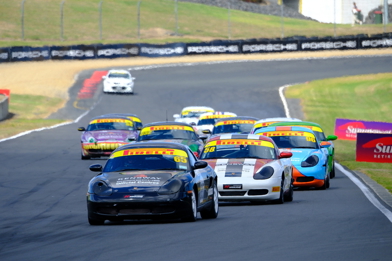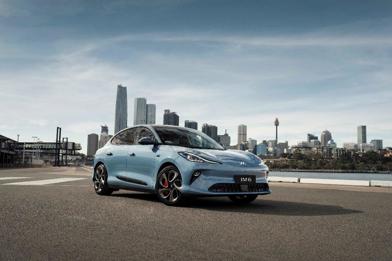Maybe it’s just the power of a good pin-stripe. Alfa Romeo’s logo and signature style on the side of Sauber’s 2018 season Formula 1 car could signify a big comeback for last year’s worst-performing team. Or not. A great livery does not a great driver make.
Sauber scored just five points during the 2017 season. But that hasn’t stopped left-field arrival Alfa Romeo (once upon a time the winningest open-wheel race team in existence) from hopping on board with the Swiss minnows and bringing updated Ferrari firepower with them.
Everything about the new F1 C37 (that’s the name of the car) is awesome. Of all the teams on the grid, it has been the most successful at incorporating that awful new “halo” device around the cockpit.
We’d love to say the Alfa Romeo Sauber F1 C37 will get plenty of airtime this year, but although the hardware has been upgraded, it still remains for the team’s drivers — four-year veteran campaigner Marcus Ericsson and rookie Formula 2 champ Charles Leclerc — to pull out all the stops in getting somewhere near the podium.
The car even has a clover leaf painted on it, so you know it’s the “hot” Alfa version. Which has got to be a good thing, right?
SUVs push aside sedans
This Himiko is a second-generation version of the bespoke carmaker’s Mazda/Morgan hybrid. Photo / Supplied
Last week in South Africa, the BMW AG Rosslyn manufacturing facility saw the last 3-Series sedan roll off the production line. The carmaker has been building 3-Series’ there for 35 years; that equates to more than 1.1 million units across five generations of 3-Series.
But now line space will instead be taken up by — well, it’s inevitable really, isn’t it? — production of the X3 medium-sized SUV.
It’s a sign of the times rendered in freshly minted sheet metal; the world’s new car buyers can’t get enough SUVs.
Sedans? Hmm, aside from steadfast sales reps, there’s less and less of a need for this increasingly outmoded shape.
Perhaps sedans will eventually become as anachronistic as cars with dickie seats, or the lovely-to-look-at, but ultimately pointless shooting brake?
The 3-Series will still be built in other locations, but with BMW extending its “X” reach outside the US (its SUVs are screwed together at a colossal factory in Spartanburg, South Carolina), it’s obvious they can’t produce these things fast enough.
And the changeover from sedan to SUV production is no bad thing for the Rosslyn plant either. In order to up-spec operations for the arrival of SUV manufacture, BMW is spending billions of South African rand on improvements.
Morgan and MX-5? The original odd couple
BMW 3-Series. Photo / Supplied
Okay, so even people with only a passing interest in motoring will probably know (or hazard a shaky guess at the fact) that when developing its ridiculously popular two-seater sports car, Mazda’s engineers were determined to capture the essence of the traditional British roadster ... with less oil leakage.
And they did just that. The MX-5, as has been well-documented, is a brilliant wee thing, offering zippy wind-in-hair motoring. It captures perfectly the 1960s chic of MG and Triumph.
So, on paper the idea of someone taking an MX-5 and using it as a base for a distinctly old school body style could feasibly work.
Maybe some custom shops would be able to fulfil the fantasy. In Japan though, there’s Mitsuoka. A quick Google image search will reveal that Mitsuoka has some interesting ideas about automotive design, generally involving melding modern metal with vintage design detail.
Here’s its latest creation: it’s a Mazda MX-5 underneath. But on top, you’ve got yourself a ... well ... we want to say Morgan. In fact, yes, we’ll definitely say Morgan. If you squint a bit.
The Himiko you see here is a second-generation version of the bespoke carmaker’s Mazda/Morgan hybrid. That’s right: there was enough of a demand in Japan for the original version that the basic design has been updated.
Apparently, the company is flat-out building 1930s, 40s and 50s themed faces on a variety of micro cars.
The Himiko is a bit more thorough in its restyling approach. Only the mid-section looks vaguely MX-5-ish, with sculptural changes aplenty to front and rear ends. The biggest change is in the wheelbase, which has been stretched by over 600mm, to accommodate the long bonnet.
That extra length ruins the original MX’5’s impressively low weight and aerodynamic slipperiness, but then we’re guessing if you’re prepared to do this to Mazda’s little roadster, you’re probably not too concerned by such things.
Or by people pointing and staring. And not in a positive way.




